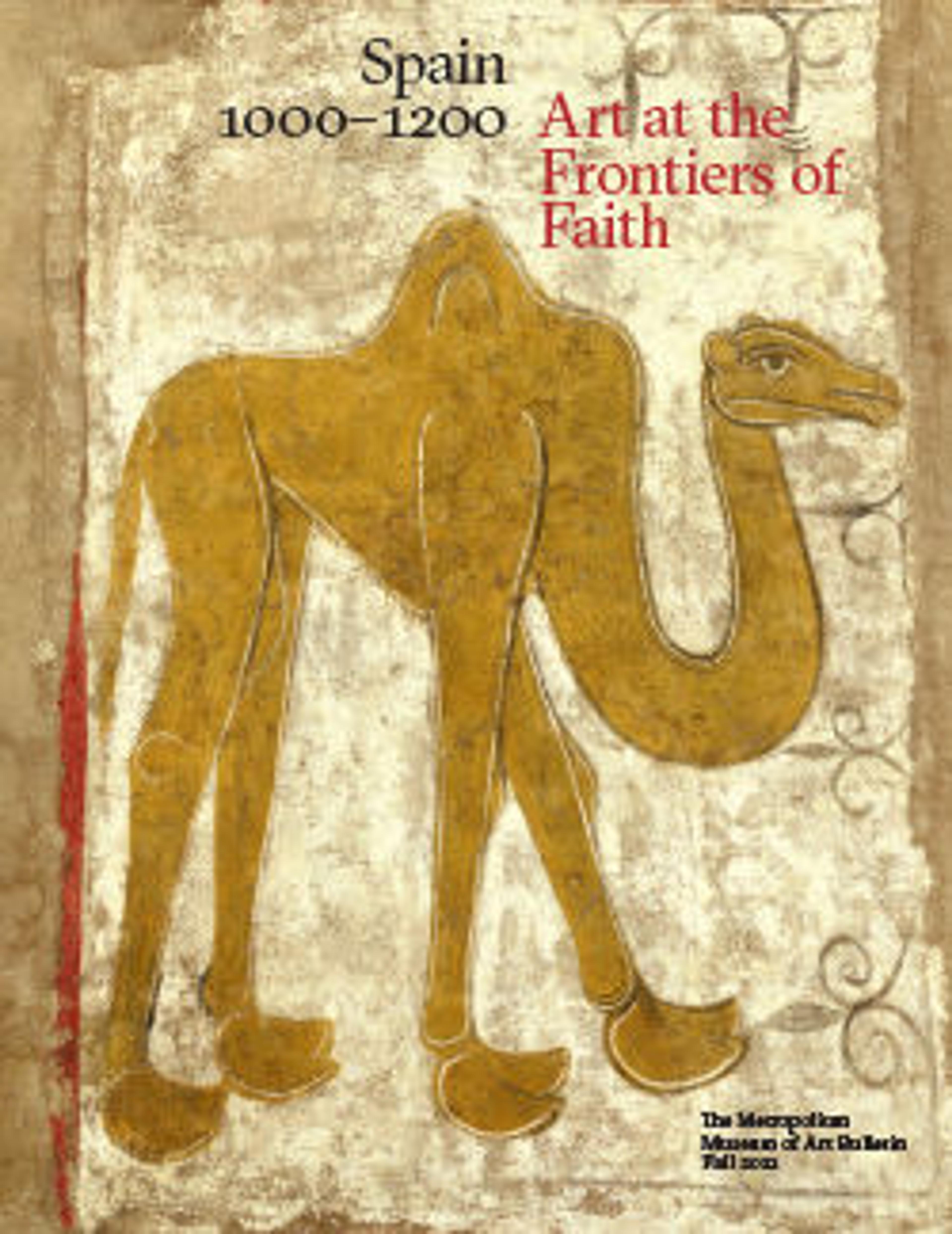The Healing of the Blind Man and the Raising of Lazarus
This painting depicts two miracles from Jesus’s adult life and ministry. Under an architectural canopy at left, Jesus heals a blind man by touching the man’s closed eyes with two fingers of his right hand—a traditional Christian gesture of blessing. At right, Jesus brings Lazarus back to life. Accompanied by Saint John the Evangelist, Jesus gestures with an open left hand while pointing a cross-shaped staff in his right at the tightly shrouded Lazarus, who rises from his sarcophagus as his sisters, Mary and Martha, lift the lid. Sparely told, both stories are meant to emphasize human connection and evoke deep emotion (Mary and Martha’s faces are stained with tears). Although the two episodes do not occur sequentially in the Gospel of John, they may have been placed side by side here because they both communicate themes of rebirth and redemption.
In the 1920s, restorers removed most of the frescoes from the walls of San Baudelio de Berlanga, leaving behind ghostly traces of the images that are still visible on the church’s walls today. The Cloisters acquired nine of these paintings from 1957 to 1961 but later returned six to Spain as long-term loans. Today, they are on display at the Museo del Prado in Madrid.
In the 1920s, restorers removed most of the frescoes from the walls of San Baudelio de Berlanga, leaving behind ghostly traces of the images that are still visible on the church’s walls today. The Cloisters acquired nine of these paintings from 1957 to 1961 but later returned six to Spain as long-term loans. Today, they are on display at the Museo del Prado in Madrid.
Artwork Details
- Title: The Healing of the Blind Man and the Raising of Lazarus
- Date: first half 12th century (possibly 1129–34)
- Geography: Made in Castile-León, Spain
- Culture: Spanish
- Medium: Fresco transferred to canvas
- Dimensions: Overall: 65 x 134 in. (165.1 x 340.4 cm)
- Classification: Paintings-Fresco
- Credit Line: Gift of The Clowes Fund Incorporated and E.B. Martindale, 1959
- Object Number: 59.196
- Curatorial Department: Medieval Art and The Cloisters
More Artwork
Research Resources
The Met provides unparalleled resources for research and welcomes an international community of students and scholars. The Met's Open Access API is where creators and researchers can connect to the The Met collection. Open Access data and public domain images are available for unrestricted commercial and noncommercial use without permission or fee.
To request images under copyright and other restrictions, please use this Image Request form.
Feedback
We continue to research and examine historical and cultural context for objects in The Met collection. If you have comments or questions about this object record, please complete and submit this form. The Museum looks forward to receiving your comments.
